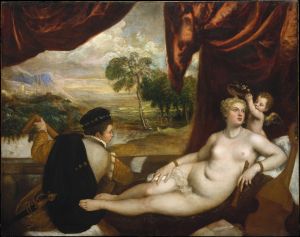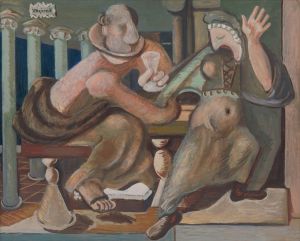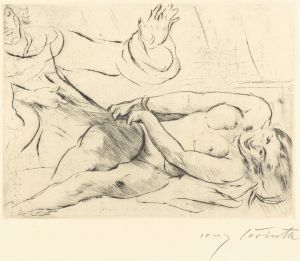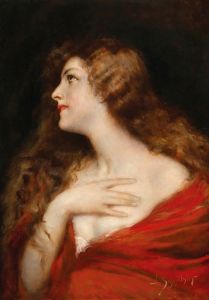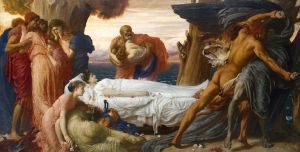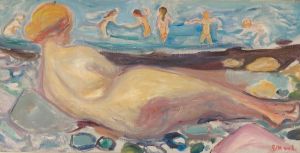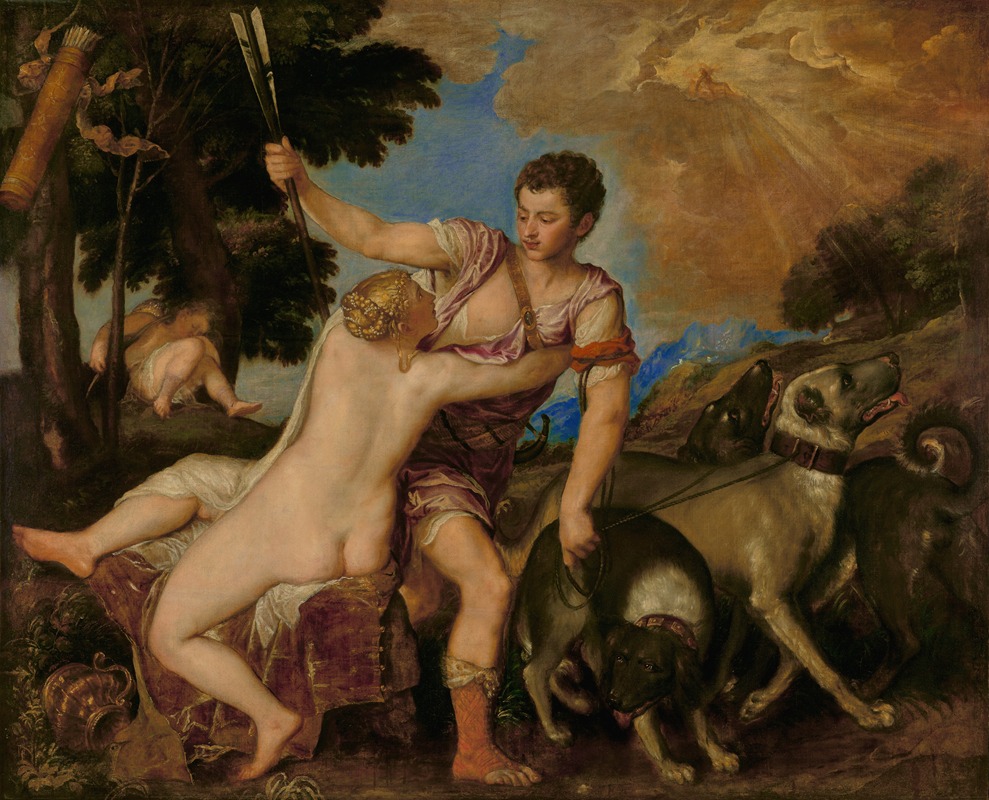
Venus and Adonis
A hand-painted replica of Titian’s masterpiece Venus and Adonis, meticulously crafted by professional artists to capture the true essence of the original. Each piece is created with museum-quality canvas and rare mineral pigments, carefully painted by experienced artists with delicate brushstrokes and rich, layered colors to perfectly recreate the texture of the original artwork. Unlike machine-printed reproductions, this hand-painted version brings the painting to life, infused with the artist’s emotions and skill in every stroke. Whether for personal collection or home decoration, it instantly elevates the artistic atmosphere of any space.
"Venus and Adonis" is a renowned painting by the Italian Renaissance master Titian. Created around 1554, this work is part of a series of mythological paintings known as "poesie," which were commissioned by Philip II of Spain. The series was intended to depict scenes from classical mythology, and "Venus and Adonis" draws its narrative from Ovid's "Metamorphoses."
The painting illustrates the tragic love story of Venus, the goddess of love, and Adonis, a handsome mortal. According to the myth, Venus falls deeply in love with Adonis, but he is more interested in hunting than in her affections. Despite Venus's warnings about the dangers of hunting, Adonis insists on pursuing his passion, which ultimately leads to his death by a wild boar. Titian captures a poignant moment in the story, where Venus tries to restrain Adonis from leaving, emphasizing the tension between love and fate.
Titian's composition is notable for its dynamic movement and emotional intensity. Venus is depicted in a state of desperation, her body twisting as she reaches out to Adonis, who is shown turning away from her, his body oriented towards the hunt. The contrast between Venus's soft, flowing form and Adonis's muscular, determined figure highlights their opposing desires. The use of rich, vibrant colors and the masterful rendering of textures, such as the softness of Venus's skin and the sheen of Adonis's armor, are characteristic of Titian's mature style.
The landscape in the background, with its lush foliage and dramatic sky, adds to the emotional impact of the scene. It serves as both a setting for the narrative and a reflection of the characters' inner turmoil. The painting's composition and use of color demonstrate Titian's skill in creating a sense of depth and movement, drawing the viewer into the unfolding drama.
"Venus and Adonis" was part of a larger collection of works that Titian created for Philip II, which included other famous paintings such as "Danaë," "Diana and Actaeon," and "Diana and Callisto." These works were highly influential and showcased Titian's ability to blend classical themes with the humanistic ideals of the Renaissance.
The painting has been housed in various collections over the centuries and is currently part of the collection at the Museo del Prado in Madrid. It remains a significant example of Titian's contribution to the development of Western art, particularly in the realm of mythological painting. Through his innovative use of color, composition, and emotional expression, Titian's "Venus and Adonis" continues to captivate audiences and inspire artists to this day.










